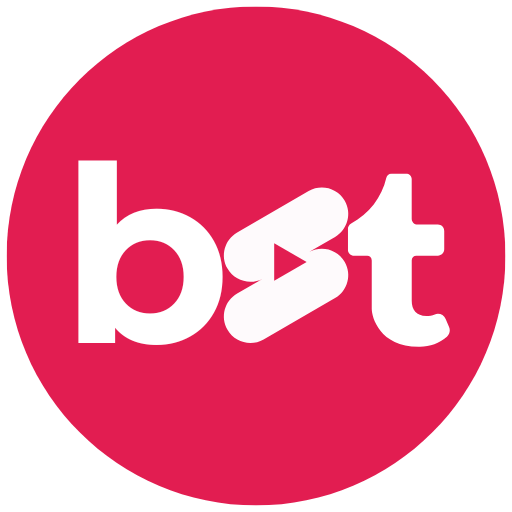Supercharge Your Platforms: Fresh Social Media Content Calendar Ideas
What is a Social Media Content Calendar?
A social media content calendar is an essential tool for managing your online presence. It helps with content planning, ensuring that your posts are timely, relevant, and engaging.
By organizing your content in advance, you can maintain a consistent posting schedule and avoid last-minute scrambles for your social media ideas.
Definition and Benefits
A social media content calendar is your secret sauce for social media marketers to stay on track and ahead of the curve in the social media world. It’s a plan that helps you plan and schedule your social media content in advance, with content scheduling. Think of it as your guide for what to post, when to post and where to post across multiple social media platforms as part of your content plan.
So why use a social media calendar? Here’s why:
Consistency and Efficiency: Keep your social media marketing flowing.
Engagement: Connect with your audience by posting more often.
Brand Awareness: Build your brand by being consistent.
Time Management: Save time and reduce stress by planning.
Collaboration: Make teamwork easy with clear planning.
Website Traffic: Drive more traffic to your site and generate leads.
By using a social media calendar you can simplify your social media, save time and keep your audience engaged and excited about your brand. Social media marketers use these calendars to maintain a posting schedule, collaborate and track their overall strategy which leads to brand growth.
Who
A social media content calendar is for anyone and everyone, here’s who:
Group
Benefits
Small Business Owners
Stay on track and engaged with planned posts.
Marketing Teams
Coordinate content across platforms.
Influencers
Plan and schedule content to keep your audience connected with fresh content.
Bloggers
Schedule blog promotions to drive traffic and engagement.
E-commerce Businesses
Plan promotions and campaigns to align with business goals.
Anyone who wants Consistency
Stay on track and engaged whether you’re a freelancer or non-profit.
By planning you can simplify your approach, save time and make your content work for your audience.
Blog Post Consistency

Using a social media calendar for blog posts is a game changer, it will keep your audience engaged and build trust. By planning content strategy you can tie your blog posts to events or campaigns, make more of an impact. It also makes collaboration easier by giving everyone a view of what’s coming up and deadlines so no last minute scrambles. It also helps you spot gaps in content so you can cover different topics for different interests.
Plus it helps you make informed data driven decisions. By tracking views and engagement you can see what works and replicate successful social media content calendar ideas and strategies. It’s a reference point to measure brand growth and spot trends for future content.
Plus it helps with planning collaborations with brands or influencers, get more exposure through strategic partnerships. As a collaboration tool it gives team visibility on tasks and deadlines so time management is efficient.
In summary a content calendar is a productivity and creativity and strategy booster for bloggers, marketers and business owners who want to take their content to the next level with social media content calendar ideas.
Create Your Social Media Calendar
Putting together a social media calendar is a game changer for influencers wanting to shake up their platforms. Let’s get into why and how planning ahead and having a content strategy can make a big difference.
Using a social media calendar template will simplify the process of organizing and managing your social media content, content scheduling, time and effort saving and collaboration and metric tracking.
Why a Social Media Calendar
A social media calendar is essential for content management. It keeps you on a posting schedule, keeps your audience engaged and builds trust. Social media marketers use it to organize their posts so they align with the brand tone and values. It also allows for planning around big events, holidays and product launches so content stays fresh and relevant. Check out our social media content ideas for small business for more.
Benefits of Advanced Scheduling
Planning ahead is a game changer for social media marketers. Using a social media calendar automates the approval process, reduces stress and saves time. By queuing up posts in advance you can refine them without the rush and make sure they align with your content strategy and brand values.
Plus scheduling posts allows you to publish at peak times for maximum engagement. By looking at the stats you can see what times to post and reach a bigger audience and more visibility across different social media platforms.
Here’s why planning ahead is cool:
| Benefit | Description |
|---|---|
| Efficiency | Batch makes and queues up posts, saving time. |
| Consistency | Keeps posts steady and on schedule. |
| Quality | Adds time for a proper review and tweaks. |
| Strategy | Aligns posts with big dates for max splash. |
| Engagement | Smart timing based on stats for better outreach. |
Planning ahead also helps with team collaboration. Everyone is on the same page, knows what’s on the schedule and the social media strategy is cohesive. This proactive approach increases engagement and brand presence across multiple social media platforms.
Check out our social media content ideas for business and social media content ideas for ecommerce.
Benefits of Using a Social Media Content Calendar
Using a social media content calendar can bring numerous benefits to your social media marketing efforts. Here are some of the most significant advantages:
Saves Time: A social media calendar helps you plan and schedule your content in advance, saving you time and reducing the stress of last-minute content creation.
Improves Consistency: A content calendar ensures that you maintain a consistent posting schedule, which is essential for building and maintaining an engaged audience.
Enhances Organization: A social media content calendar helps you organize your content, making it easier to manage multiple social media accounts and platforms.
Boosts Productivity: By planning your content in advance, you can focus on other tasks and responsibilities, increasing your overall productivity.
Increases Engagement: A well-planned content calendar can help you create content that resonates with your audience, leading to increased engagement and a stronger online presence.
By incorporating a social media content calendar into your strategy, you can streamline your social media marketing efforts and achieve better results.
Social media content calendar apps and tools

Creating a content plan involves using tools, templates and content planning tools to simplify your content planning and scheduling process. Here are the essentials:
Hootsuite: A social media management tool to schedule and publish social media posts across multiple platforms, a central hub for your social media accounts.
Sprout Social: A full social media management software with robust scheduling, publishing and analytics, so you can keep to a posting schedule and track performance.
Buffer: Simple and effective, Buffer allows you to plan and publish content across multiple social media platforms, keep a flow of posts going.
Trello: A project management tool that can be used to organize your content ideas and schedule posts using boards, lists and cards.
Google Sheets: A versatile tool to create a custom template, to track and plan your content strategy in a format that suits your team.
Use these tools and you’ll be able to manage your social media strategy and have an organized, efficient and aligned approach to your brand.
Social Media Calendar
Step 1: Define Your Niche and Goals
Defining your niche and goals is the first step in creating a social media content calendar that will resonate with your audience. Your niche is what you’re an expert in or the main topic your social media content will be about. Your goals are what you want to achieve through your social media – whether it’s brand awareness, website traffic or leads.
Ask yourself:
What am I an expert in? What do I know best and what can I offer that’s unique.
What topics do I want to focus on? Narrow down the topics that align with your expertise and interest your audience.
What are my short term and long term goals for my social media content? What does success look like for you in the short and long term.
Who is my target audience? Who are you speaking to, what are their interests and pain points.
What type of content do they engage with? Look at past performance to see what type of posts get the most interaction.
By answering these questions you’ll have a clear and focused content strategy that delivers results. Knowing your niche and goals will help you create content that attracts and retains your target audience and makes your social media efforts organized and efficient.
Step 2: Choose Your Post Types and Formats
Now that you have your niche and goals sorted it’s time to decide on the types and formats of posts that will resonate with your audience. There are many types of social media posts you can create, each for a different purpose:
Educational Posts: Inform your audience about a topic or issue. These can be how-to guides, tutorials and industry insights.
Promotional Posts: Promote your products or services. These can be special offers, new product launches or exclusive deals.
Engaging Posts: Encourage interaction. These can be questions, polls or user generated content.
Inspirational Posts: Motivate and inspire your audience. These can be quotes, success stories or motivational messages.
In terms of formats you have:
Text-only Posts: Simple and to the point, good for quick updates or announcements.
Image Posts: High quality visuals that grab attention and convey your message.
Video Posts: Highly engaging and versatile, good for tutorials, product demos or storytelling.
Live Streaming: Real time interaction with your audience, good for Q&A or live events.
Stories: Short, ephemeral content good for behind the scenes or quick updates.
Reels: Short, engaging videos good for showcasing creativity and personality.
When choosing your post types and formats think about what type of content your audience engages with most, what your goals are for each post and what format best conveys your message. By choosing the right combination you’ll create content that resonates with your audience and delivers results.
Step 3: Set Your Posting Schedule
Setting your posting frequency is key to being consistent on social media. Your posting frequency will depend on your goals, audience and resources. Here’s to consider:
How often do you want to post? Choose a frequency that keeps your audience engaged without overwhelming them.
What’s the best time to post for your audience? Analyze when your audience is most active to get the most engagement.
How much content do you have? Make sure you have enough content to maintain your posting schedule.
What’s your budget for content creation? Consider the resources you have for creating and curating content.
When setting your posting frequency start with a schedule you can manage and adjust as needed. Use a content calendar to plan and schedule your posts in advance so you can maintain a consistent schedule. Leave room for spontaneity and flexibility to respond to real time events or trends.
By being consistent you’ll have a strong presence on social media and be able to interact with your audience regularly. Consistency builds trust and keeps your audience coming back for more.
Tips for Creating an Effective Social Media Content Calendar
Creating an effective social media content calendar requires careful planning and consideration. Here are some tips to help you get started:
Define Your Goals: Identify your social media marketing goals and objectives, and ensure that your content calendar aligns with them. Whether it’s increasing brand awareness, driving website traffic, or generating leads, having clear goals will guide your content strategy.
Know Your Audience: Understand your target audience, their interests, and their preferences to create content that resonates with them. Use analytics and insights to gather information about your audience’s behavior and tailor your content accordingly.
Choose the Right Tools: Select a social media management tool or software that meets your needs and helps you streamline your content creation and scheduling process. Tools like Hootsuite, Sprout Social, and Buffer can be invaluable in managing your social media accounts.
Plan Ahead: Plan your content in advance, taking into account holidays, events, and other relevant dates that may impact your content. This ensures that your content is timely and relevant, and helps you avoid last-minute scrambles.
Be Flexible: Be prepared to adjust your content calendar as needed, and don’t be afraid to try new things and experiment with different content types. Flexibility allows you to respond to real-time events and trends, keeping your content fresh and engaging.
By following these tips, you can create a social media content calendar that helps you achieve your marketing goals and keeps your audience engaged.
Keeping Our Brand Solid
Okay folks, let’s talk about keeping the brand mojo strong for all you social media influencers out there. Reviewing your content regularly is key to keeping it on point and avoiding social media fails.
Keeping It Top-Notch
You want people to trust and believe in your brand, right? Well, quality matters. We gotta make sure our content is always on point. That means checking the spelling, making sure our photos don’t look like they were taken with a potato and sticking to our brand’s voice like glue.
Keeping everyone excited about our posts is a big deal. That’s why we post regular, good looking stuff. Also, let’s be smart about it—content review is key to checking the quality of your content. Check out how people are responding and adjust. Tracking what works is easy with some basic numbers:
| Thing to Check | What it Means |
|---|---|
| Likes | How much folks are loving it |
| Comments | How much folks are chatting |
| Shares | Are people spreading the word? |
| Engagement Rate | Are they in love with us, basically? |
Need some brain fuel? Check out our social media content ideas and April social media content ideas. New ideas incoming!
Playing It Safe
To keep your brand image positive you need to have clear brand guidelines. Define how your brand communicates, what content is allowed and what’s not. These rules prevent mistakes and ensure consistency.
Monitoring brand mentions is also important. Use social listening tools to catch any negative chatter early. Having a content approval process in place is a safety net so all posts align with your brand before going live.
By managing your brand well you have a solid social media presence. For new content ideas check out fitness social media content ideas or travel agent social media content ideas.
Building Our Community
Building a community around your brand is key to long term success. Engage with your audience by responding to comments and messages promptly. Encourage user generated content and content engagement by creating contests or challenges that get your followers to share their experiences with your brand. This increases engagement and strengthens the bond between your brand and audience.
Consider creating a branded hashtag to get your followers to feel part of the community.
Workflow

Approval Process
For social media influencers, workflow is key. It means everything runs smoothly while we’re whipping up those pretty pieces of content. Sorting out a process saves us from those last minute panics. You know, the kind that make you wish you had a Time-Turner.
Laying out who does what can really help. Everyone should know their role—whether they’re writing content or giving the final thumbs up. Having a plan in place helps to stop any hold ups and speed up the magic.
A visual of the workflow can help everyone see:
| Step | Responsibility | Tool/Platform |
|---|---|---|
| Content Creation | Content Creator | Google Docs, Trello |
| Initial Review | Editor | Grammarly, Hemingway |
| Quality Assurance | QA Specialist | Asana, Slack |
| Final Approval | Team Lead/Manager | Trello, Monday.com |
Using tools like Trello or Asana where you can assign tasks, set those deadlines and watch updates in real time can turn chaos into order. These platforms become the hub of our projects. For new content ideas check out our social media content ideas for small business.
Team Communication
Talking it out properly keeps the content rolling when we’re creating. Without it things get messy fast—think duplicating work or waiting ages to get things done. A one stop shop for all our comms can keep things smooth.
We like tools like Slack or Microsoft Teams for keeping the chat going and content collaboration. We can set up channels so everything is neatly categorised by project or topic we’re talking about.
Here’s a simple way to set up your chat channels:
| Channel | Purpose |
|---|---|
| #content-creation | Dish out ideas, draft talk, and revisions |
| #approval-process | Track how things are moving |
| #quality-assurance | Feedback and fixes from QA |
| #final-approval | Hear about what’s approved or axed |
By sorting out approvals and team comms we can pump out top notch content faster and stay ahead of the social media game. For more content ideas check out our social media content ideas.
Content Planning
Having a content plan is a real game changer for social media influencers looking to grow their presence. Including content planning in the process of scheduling social media posts is key. Nailing the timing for product launches, campaigns or events is like winning the jackpot! We’re talking about everything being in sync—what to post, when to post it and making sure everyone’s on the same page. This is how we make sure our voice is consistent across all platforms. Social media content calendars are the tool for organizing and planning social media posts, helping social media marketers create a cohesive brand, improve consistency, track performance and collaborate across functions.
Product Launch
Rolling out a new product or service is like the grand finale for influencers and brands alike. A successful launch requires a content launch plan. Here’s how we can make that launch day pop:
Pre-Launch Teasers: Build the hype! Share some behind the scenes or a countdown so people know what’s coming. Think of it like whispering secrets you can’t wait to fully reveal.
Launch Day Announcements: Time to shout from the rooftops! Fill your feeds with posts showing off the new product. Make them stand out with great photos, engaging vids and captions that grab attention.
Post-Launch Engagement: Keep the party going by sharing what customers are saying—any reviews or great pics. Chat with your followers, answer their questions and keep them in the loop.
Analytics and Adjustments: Check how those launch posts are performing with some analytics tools. Tweak here and there to keep the party going.
Here’s a schedule to follow:
| Phase | Content Type | Schedule |
|---|---|---|
| Pre-Launch | Teasers, Behind-the-Scenes | 2 weeks before |
| Launch Day | Announcement Posts, Videos | Launch Day |
| Post-Launch | UGC, Reviews, Testimonials | 1 week after |
| Analytics Review | Performance Metrics, Strategy Updates | 2 weeks after |
Campaign and Event
Aligning your social media with ongoing campaigns and events is the way to go! Whether we’re spotlighting a new campaign or working the room at an event, here’s our formula:
Campaign Launch: Kick it off with a bang. Share the details and build the hype for what’s to come.
Regular Updates: Keep people in the loop. Post updates, share results and give people a behind the scenes look now and then.
Event Participation: If you’re at an event go live on social. Post updates, share photos and even drop an interview or two. An event hashtag will tie it all together and get people involved.
Post Event Content: Once the event is over, keep sharing! Post highlights, send out thank yous and recap the best bits to keep the party going.
And here’s how to align your content with campaigns and events:
| Phase | Content Type | Schedule |
|---|---|---|
| Campaign Kickoff | Announcements, Objectives | Campaign Start |
| Consistent Updates | Milestones, Behind-the-Scenes | Weekly |
| Event Participation | Live Updates, Photos, Interviews | During Event |
| Post-Event Content | Highlights, Thank You Messages | Post-Event |
Looking for more ideas? Check out our other posts on social media content and campaign planning.
Having a plan for launches and campaigns keeps our voice consistent and our followers excited to be part of our story.
Social Media Content
Stuck for ideas? Looking for inspiration to spark social media post ideas? Here are some social media content ideas to get you started:
User-Generated Content: Share your customers by posting their photos, reviews and testimonials. This proves social proof and encourages more engagement from your audience.
Behind-the-Scenes: Give your audience a look into your brand’s story by posting behind the scenes content. This can be day to day operations, team introductions or sneak peeks of new products.
Educational Content: Position your brand as a thought leader by posting educational content. This can be how to guides, industry insights or tips and tricks related to your niche.
Promotional Content: Drive sales and conversions by posting promotional content. This can be special offers, discounts or announcements about new products or services.
Seasonal and Timely Content: Stay relevant by posting content that’s current, holidays or seasons. This helps you connect with your audience on a more personal level.
By mixing in these content ideas into your social media calendar you’ll keep your feed diverse and engaging and your audience interested and connected to your brand.
Themed Content
Themed content is a great way to have a consistent and engaging social media presence by using content themes. Here are some themed content ideas for each day of the week:
Motivation Monday: Kick off the week with motivational quotes and images to inspire your audience. This sets the tone and encourages engagement.
Tuesday Tips: Share tips and advice related to your industry or niche. This positions your brand as an expert and gives value to your audience.
Wednesday Wisdom: Share wisdom and insights from industry leaders or experts. This can be quotes, articles or interviews that offer knowledge.
Throwback Thursday: Take a trip down memory lane and share throwback content. This can be old photos, past achievements or the history of your brand.
Friday Feeling: End the week with a bang and share fun and engaging content. This can be light hearted posts, memes or anything that makes your audience smile.
By using themed content in your social media content calendar you can have a consistent posting schedule and your audience will look forward to your posts.
Content Mix
A content mix is a key part of a social media content calendar. It’s about choosing the right types of content to target different parts of the buying cycle. A good mix of content will help you achieve your marketing goals and engage your audience.
There are several content mix strategies you can use:
4-1-1: For every 6 posts 4 should be relevant content, 1 should be a soft sell and 1 should be a hard sell. This keeps your feed balanced and engaging.
The Rule of the Third: One third of posts should be promotional, one third should be educational and one third should be entertaining. This is a well rounded content mix.
5-3-2: For every 10 posts 5 should be curated content, 3 should be branded content and 2 should be personal, non promotional content. This keeps things varied and your audience interested.
80-20: 80% of content should be informative, entertaining and educational and 20% should be self promotional. This builds trust and keeps your audience engaged.
By using a content mix strategy you can have a balanced content mix that engages your audience and helps you achieve your marketing goals. By incorporating these into your social media content calendar you’ll have a diverse and engaging feed that resonates with your audience.
Content That Pops
It’s All About Them
When we’re creating a social media content calendar we can’t just think about what we want to share. It’s all about thinking about our audience first and making sure the content is relevant. If we keep sharing stuff that keeps ‘em interested they’ll stick around and feel connected to our brand. We’re tossing them stuff that matters to them, not just us.
By planning out our social media ahead of time we can make sure we’re covering a range of topics that resonate with our fans—like the educational, fun or just plain inspiring stuff. Keeping it fresh and interesting is key, right?
Here’s a sneak peek at what kinds of posts get a lot of engagement:
| Type of Content | Share of Posts |
|---|---|
| Informational | 67% |
| Promotional | 33% |
Looking for inspo? Check these out:
interior design social media content ideas
real estate content ideas for social media
october social media content ideas
Info and Sales Sweet Spot
We need to give our audience great content but we’re also in to promote our stuff. The trick is not to bombard people with promotions. Content balance is key. Keep it real, keep it engaging. A good rule to follow is, let two thirds of what we put out there be informational and keep the salesy part to a third or less.
Stuff to include in your info posts:
Tips and How-Tos: Stuff that’s relevant to our niche.
Questions and Polls: Get people talking and sharing.
Behind-the-Scenes: Give a peek into our daily grind.
And for the promo bits:
Exclusive Offers: Share the deals.
Product Launches: Talk about our new stuff.
Testimonials: Show off those reviews.
By spacing out and planning our posts we won’t push people away. For more ideas check out:
small business social media content
health social media content
social media content for musicians
Christmas social media content
By putting our audience first and balancing info and promo we can have a social media calendar that keeps our followers coming back.
Post Optimization
Post optimization and content optimization is key to getting your posts in front of as many people as possible and engaging your audience. Here’s how:
Use Keywords: Include relevant keywords in your social media posts so they can be found. This will get your content in search results and in front of more people.
Use Eye-Catching Images: High quality, eye catching images make your social media posts more visually appealing and increase engagement. Visual content gets shared more so you’ll get more reach.
Use Videos: Videos are super engaging and can convey your message better than text alone. Use videos to show your products, share tutorials or tell your brand’s story.
Use Hashtags: Hashtags make your posts more discoverable by categorizing them under topics. Use relevant and trending hashtags to get more visibility on your posts.
Post at the Right Time: Timing is everything. Analyze your audience’s activity and post when they’re most active to get the most engagement.
By optimizing your social media posts you can get more reach and engagement and achieve your marketing goals and grow your social media presence.
Engaging Social Media Posts
Engaging social media posts and boosting content engagement is key to get your audience’s attention and achieve your marketing goals. Here’s how:
Use Headlines: Your headline is the first thing people see so make it count. Use attention grabbing headlines to get your audience’s attention and make them want to read more.
Use Images: Visual content is more engaging than text alone. Use high quality, compelling images to make your social media posts more visually appealing and engaging.
Use Storytelling: People love stories. Use storytelling to make your social media posts more engaging and relatable. Share your brand’s story, customer testimonials or behind the scenes content.
Use Humor: Humor makes your social media posts more fun and shareable. Use humor to connect with your audience and make your content more memorable.
Use Questions: Ask questions to encourage engagement. Questions can start conversations and get your audience to interact with your posts.
By crafting engaging social media posts you can get your audience’s attention and achieve your marketing goals and keep your followers interested and connected to your brand.
Repurposing Content
Repurposing content is a great way to give old content new life and achieve your marketing goals. Content repurposing can be done in several ways:
Turn Blog Posts into Videos: Turn your blog posts into videos. This makes your content more shareable and gets in front of a wider audience.
Turn Videos into Blog Posts: Convert your videos into detailed blog posts. This gets in front of readers who prefer written content and improves your SEO.
Turn Social Media Posts into Email Newsletters: Compile your best social media posts into an email newsletter. This keeps your email subscribers engaged and informed.
Turn Email Newsletters into Social Media Posts: Share snippets from your email newsletters on social media. This gets more eyes on your content and keeps your social media feed fresh.
By repurposing content you can achieve your marketing goals and save time and resources and get your content in front of a wider audience in different formats.
Managing Your Social Media
Tools and Templates for Social Media Calendars
Managing multiple social media accounts feels like juggling flaming torches but with the right tools, templates and content calendar tools it’s a breeze. Here are some popular options to help you stay on top of your game:
Hootsuite: This social media management tool lets you schedule and publish content across multiple social media platforms. It’s like having a personal assistant for your social media.
Sprout Social: A comprehensive social media management software that offers tools for scheduling, publishing and analyzing your content. It’s perfect for keeping everything organized and efficient.
Buffer: Another great scheduling tool that lets you plan and publish content across various platforms. It’s simple to use and super effective.
Trello: While it’s a project management tool, Trello can be a great way to create a visual social media content calendar. Use boards, lists and cards to keep everything in check.
Google Sheets: Sometimes a good old spreadsheet is all you need. Google Sheets can be used to create a customizable social media content calendar template that fits your needs.
These tools and templates will help you streamline your social media management, save time and increase efficiency. So, pick the ones that work for you and watch your social media fly!
Best Practices for Social Media Account Management
Best practices for social media account management are important to ensure your social media accounts are well managed and achieving your marketing goals. Here are some best practices for social media account management:
Use a Social Media Management Tool: Tools like Hootsuite, Sprout Social and Buffer can help you manage your social media accounts and schedule your posts. These tools streamline your workflow and save time.
Use a Social Media Calendar: A social media calendar helps you plan and schedule your social media posts in advance. This ensures a consistent posting schedule and keeps your content organized.
Monitor Your Social Media Accounts: Regularly monitor your social media accounts to respond to comments and messages promptly. Engaging with your audience builds trust and a community.
Analyze Your Social Media Performance: Use analytics tools to track your social media performance. Knowing what works and what doesn’t helps you refine your strategy and improve your results.
Adjust Your Social Media Strategy: Based on your performance data adjust your social media strategy to better align with your goals. Continuous improvement is key to long term success.
By following these best practices you’ll have well managed social media accounts and achieve your marketing goals and build a strong social media presence.
Common Mistakes to Avoid
When creating a social media content calendar, there are several common mistakes to avoid. Here are some of the most significant ones:
Lack of Planning: Failing to plan your content in advance can lead to inconsistent posting, reduced engagement, and a weaker online presence. Make sure to dedicate time to plan your content strategy.
Inconsistent Posting: Inconsistent posting can confuse your audience and make it difficult to build a loyal following. Stick to a consistent posting schedule to keep your audience engaged.
Ignoring Your Audience: Failing to understand your target audience and their preferences can lead to content that falls flat and fails to engage. Use analytics to gather insights about your audience and tailor your content to their interests.
Not Using the Right Tools: Using the wrong social media management tool or software can make it difficult to streamline your content creation and scheduling process. Choose tools that fit your needs and help you manage your social media accounts efficiently.
Not Being Flexible: Failing to adjust your content calendar as needed can lead to stagnation and a lack of engagement. Be open to making changes and trying new content types to keep your audience interested.
By avoiding these common mistakes, you can create a more effective social media content calendar and achieve better results in your social media marketing efforts.
Measuring Success
Measuring the success of your social media content calendar is important to know what’s working and what’s not. Here are some key metrics to track:
Engagement: This includes likes, comments, shares and other interactions with your content. High engagement means your content is resonating with your audience.
Reach: This is the number of people who have seen your content. A higher reach means your content is being seen by more people.
Impressions: This is the number of times your content has been displayed. It helps you understand the visibility of your posts.
Click-through Rate (CTR): This is the number of people who have clicked on your content. A higher CTR means your content is compelling and driving action.
Conversion Rate: This is the number of people who have taken a desired action, such as filling out a form or making a purchase. It’s the key indicator of how effective your content is at driving results.
To track these metrics you can use social media analytics tools such as Facebook Insights, Twitter Analytics, Instagram Insights and Google Analytics. By tracking these metrics you’ll be able to know what’s working and what’s not and make data driven decisions to improve your content calendar.
Tracking Performance and Engagement
Tracking performance and engagement is important to know how your content is resonating with your audience. Here are some ways to track performance and engagement:
Use Social Media Analytics Tools: Tools like Hootsuite, Sprout Social and native platform analytics (e.g. Facebook Insights, Twitter Analytics) can help you track metrics such as engagement, reach, impressions, CTR and conversion rate.
Monitor Your Content in Real-Time: Use tools that provide real-time analytics to see how your posts are performing as soon as they go live. This allows you to make quick adjustments if needed.
A/B Testing: Compare the performance of different types of content to see what resonates best with your audience. This helps you refine your content strategy.
Social Media Audits: Periodically review your social media performance to see what’s working and identify areas for improvement. This helps you stay on track and continuously improve your content strategy.
By tracking performance and engagement you’ll be able to improve your content calendar and content. Continuously monitoring and adjusting will keep your social media on track.
Conclusion
A social media content calendar is a powerful tool that can help you streamline your social media marketing efforts, increase engagement, and build a stronger online presence. By understanding the benefits of using a social media content calendar, following tips for creating an effective one, and avoiding common mistakes, you can create a content calendar that helps you achieve your social media marketing goals.
Incorporate these strategies into your social media plan, and watch your engagement and brand presence grow. Happy planning!







